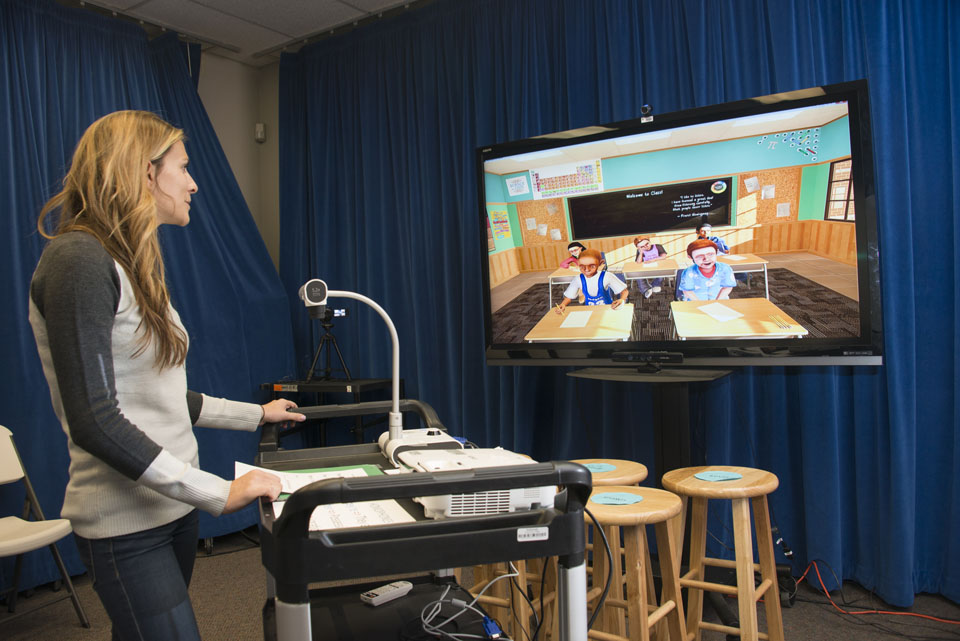Teaching Credential Students Use Virtual-Reality Tool to Train for Classroom Careers

Special education credential student Paige Ramer uses TeachLive to practice a lesson on homophones. Photo by Lee Choo.
“Today we’re going over homophones,” Paige Ramer, a California State University, Northridge special education credential student, told a group of middle school students. “What’s the difference between there, their and they’re?”
One student had his hand up. Another student sat and looked disinterested. Yet another was distracted.
None of them were real.
Ramer was not in a classroom, but was teaching virtual students in a studio with fellow credential classmates and her professors. She was using cutting-edge software called TeachLive, a “mixed-reality” environment where educators-in-training can practice teaching before a classroom of virtual young people programmed to act like real students — boredom, distractions and all — and receive instant feedback from professors.
Adopting the tool in 2012, CSUN was the 13th university in the country to use TeachLive. Special education professor Sally Spencer said TeachLive has changed the way credential students learn how to teach, providing a needed bridge between coursework and student teaching.
“For about 100 years, we have had the same model for education,” Spencer said. “Students take classes and learn about teaching, and then we throw them in the fire. It’s a sink-or-swim model. They get tossed into teaching with real kids, and there aren’t a lot of opportunities for feedback. They definitely can’t do things over again — they have only one shot to get it right.
“But [TeachLive] helps isolate and pinpoint teaching behaviors that are effective or ineffective, giving teachers-in-training a chance to practice them until they get them right before going out into a real classroom,” Spencer continued. “Learning to teach is no longer done in the abstract.”
CSUN teacher candidates using TeachLive stand in front of an eight-foot screen, where the virtual kids appear. The children all have distinct personalities and interact with the teacher in real time, giving students like Ramer a lifelike classroom experience. Professors interject during the sessions to give the teachers pointers.
“[In the sessions], professors will stop us and tell us to do things like move around and point during lessons, not just read out loud to the students, or tell us to reword phrases,” Ramer said. “Having that kind of discussion makes us more aware of how important it is to plan. We constantly have to be aware of how we are speaking. But once we get those steps down, we improve dramatically and the [virtual] students even respond to us in a better way.”
Spencer said the software also helps her students build confidence and gain classroom management skills.
“One of the great advantages is that we get to control the behavioral levels of the [virtual] kids,” Spencer said. “If the new teacher isn’t too confident, we set the behavior levels low so they can focus on teaching. We turn up the behavior levels as they get more confident, so they get to experience teaching and managing behavior at the same time.”
In addition to professors, the sessions are done in front of other credential students. Ramer said it is a positive experience to support and learn from each other.
“It was a daunting thing to begin with — we were all very nervous going up in front of everybody,” Ramer said. “But we are very supportive of each other and we always try to talk to each other before the TeachLive sessions. And afterward, we say what we liked about each other’s sessions and discuss what we might include in our own lessons. We understand each other’s feelings, and it gets a little bit easier as the semester goes on.”

 experience
experience